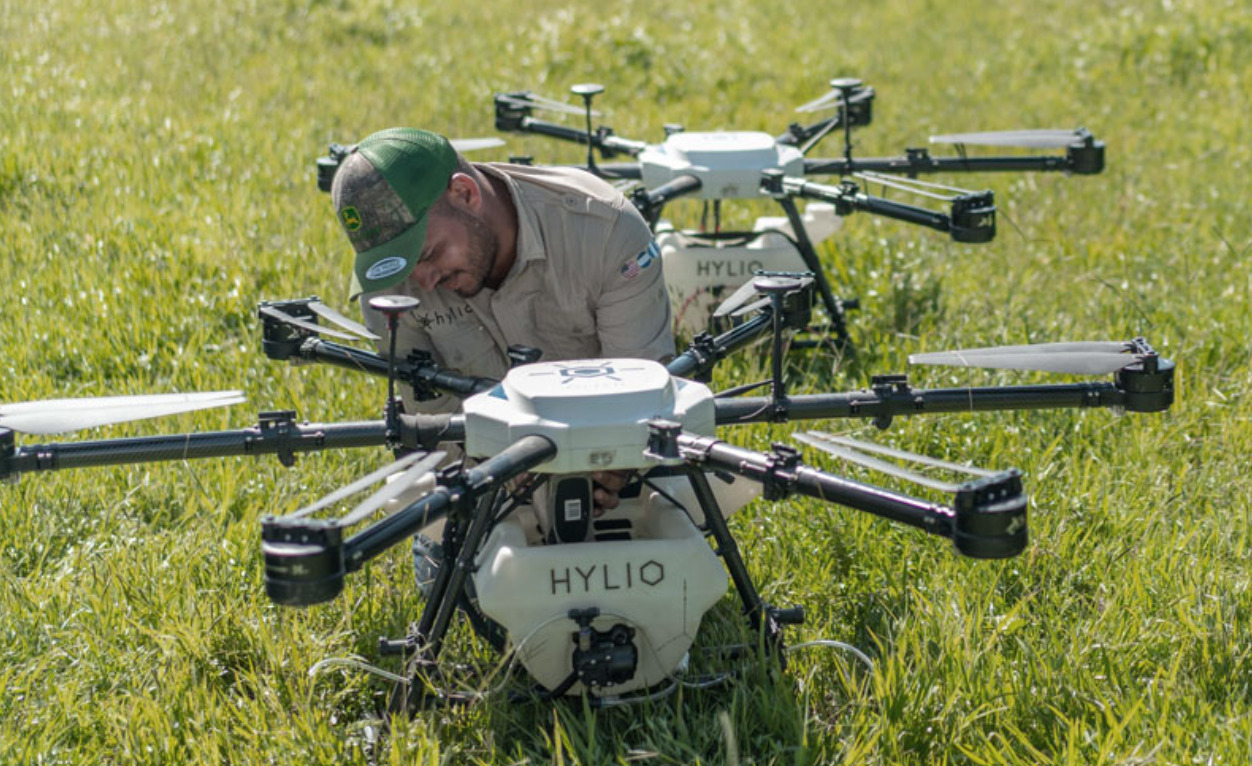Texas-based ag drone maker Hylio has raised $2 million on equity crowdfunding platform StartEngine to expand production at a new facility capable of producing 5,000-plus drones a year at full capacity.
The firm, which has sold 850-plus drones to date generating revenues of more than $30 million, is seeking to differentiate itself in a market dominated by Chinese firm DJI and positioning itself as a ‘Made in America’ option for farmers in an “evolving trade environment.”
Key to this is the company’s proprietary software (“AgroSol”) that integrates with clients’ existing systems, swarm control (Hylio has FAA approval to operate up to three heavy duty drones simultaneously with one pilot), robust hardware, and precision ag tools such as spot-spraying, spline spraying, and zone spraying, CEO Arthur Erickson told AgFunderNews.
It is also developing automated EPA/FAA reporting, work order management, billing, and other tools via Agrosol to help embed its products within the structures of big corporate customers, he said. “We are the enterprise solution.”
‘Backlogged with orders’
Erickson added: “We’ve previously raised about a million on this [StartEngine] platform, and in this new raise we’re already at $2 million+ with 30 days to go, so we expect to raise a million or two more. This is a really exciting time for us because we’re going from 10,000 to about 50,000 square feet of production space. I’m very bullish about where we’re going because demand is strong and we are so backlogged with orders.”
Hylio is also benefiting from the regulatory headwinds facing market leader DJI, which has been hit by new import tariffs on goods coming into the US from China and is also battling attempts to restrict its access to the US market from US lawmakers alleging it presents national security threats, a claim it has repeatedly denied.
Hylio products are around 35% more expensive than drones from DJI, which “benefits from huge economies of scale, vertical integration, and name recognition,” claimed Erickson. However, that gap has closed a little with the recent tariffs, he said, and could close further should the Trump administration seek to escalate its trade war with China.
Some farmers are also wary of investing large sums to buy drones they fear may be subject to restrictions imposed by the US government, he claimed (although proposed restrictions on DJI drones would cover new, not existing, models).
While Hylio has been “trying to de-Asia our supply chain from day one,” claimed Erickson, it currently buys batteries from China, although it is “working on new battery chemistry with some partners that would enable you to get three flights per battery charge.”
FAA-approved swarm technology
For large farms, Erickson added, Hylio’s swarm technology is particularly attractive. “With our latest model [the HYL-150 ARES] you can spray anywhere from 40 to 60 acres per hour at reasonable dosage, but if you take swarming into account, now you can have one operator with three drones that can do three times that acreage, whereas with DJI tech, you’d need three people out there controlling those drones.”
Ultimately, he said, “We want to provide a complete hands-off experience whereby the drones would land in some sort of box where they can refill and recharge and go back out there, and work for a week, or however long is needed. As an operator, you might have been monitoring them remotely, but you wouldn’t physically have to be there on site.”
What is driving demand for ag spray drones?
As to what is driving demand for ag spray drones, speeds and payloads have been steadily increasing, while it’s becoming harder and more expensive to find pilots to fly traditional crop dusters, said Erickson.
Drones are also able to fly much closer to crops than planes and helicopters, reducing drift and overspray and enabling farmers to access areas where ground spraying is challenging due to excessive rain or challenging terrain, he explained.




